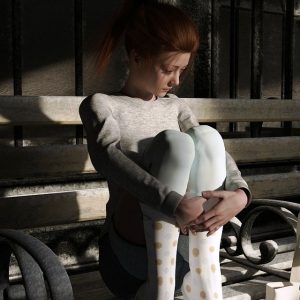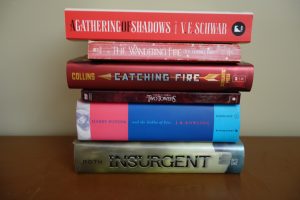It’s back to school for the kids. And, thankfully, it’s back to in-person workshops and conferences for writers. Some workshops are still virtual, but more and more, we’re seeing hybrid programs where participants can choose to view from home or sit in the classroom.
But it’s been a while, writer. Sitting in your jammies with your camera off has allowed you to be a relaxed participant in virtual events. Maybe too relaxed? Here’s a quick primer to get your head back into the game of learning.

1. Physical comfort. The temperature, acoustics and furniture are seldom within the control of the facilitator. Dress in layers to cope with hot/cold. Bring your own water, bring a small cushion if hard chairs bother you. Pay attention to housekeeping information, location of bathrooms, break times and so on.
2. Follow the health guidelines. If the facility or the presenter asks you to mask, do so. If you are not comfortable without a mask, you are fine to wear one even if everyone else is not. If social distancing is required, don’t be that person who will only sit in the third row, aisle seat, even if it means disrupting social distancing.

3. Keep it simple. Avoid covering your area with pencils, pencil sharpener, highlighters, pens, three journals (in case you fill them?), personal fan, five resource books on the topic, water bottle and coffee travel mug. All that stuff can distract others – and maybe, you too. If you need to have them close at hand, put them in the knapsack and pull them out only when required.
4. Quiet snacks. As above, unwrap the hard candy or granola bar during breaktime to avoid being a distraction. As presenters, Gwynn and I can attest to how noises can disturb others while we’re speaking or in the quiet time of writing exercises. Crunch. Crackle. Pop!

5. Be tech-savvy. If you want to work on a laptop or tablet, make sure it is charged and bring your own extension cord if you need to plug it in. Never assume there is Wi-Fi available. And for Pete’s sake, turn off the cell phone. Or at least, put it on silent because others will likely hear “vibrate.” If you must check it occasionally for a vital reason, be discreet.
6. Consider going “low-tech.” In other words, writing by hand with pen/pencil on paper. We are used to our laptops and tablets, but there is a physical connection with our hands on paper that is missing with the keyboard. Laptop text arrives neat, spaced perfectly and with autocorrect. Getting messy with a pen in an exercise can lead to amazing results.

7. Ask for permission to record the workshop. Do not assume it’s okay otherwise because it isn’t. Not every facilitator is comfortable being recorded and we hold the copyright on our material. Indeed, your workshop colleagues may also not be comfortable knowing their questions and comments will be recorded. Better yet, ask at the start if notes/handouts will be shared with participants.
8. Do the exercise. It doesn’t matter if you don’t like it or think it’s too hard. In fact, it’s important to challenge yourself. You are here to learn and part of that process is to try new approaches, to stretch your pen. And don’t be smug about how this exercise is so basic, you can do it without thinking. The point of all exercises is to tickle your brain. Drop the smug and pick up the pen.

9. Ask questions. Do your homework on the topic and/or presenter/facilitator. And prepare at least one question that shows you’ve done so. No question is a dumb question because it’s likely that at least one other person in the room is wondering the same thing as you. Maybe the presenter didn’t explain it enough. Maybe your experience is different from what is suggested. An unasked question doesn’t get an answer.
10. Be open to the ideas and experiences shared by participants. As teachers, we always learn new things from participants. Even those just beginning the writing journey share remarkable insights and approaches. As participants in workshops, Gwynn and Ruth realize that there is a wealth of knowledge among colleagues and we are eager to learn from them. “I don’t agree” shuts down people. “That’s different to my experience” shows you’re being thoughtful. “I never thought of that before. Can you explain a little more?” opens the door to sharing ideas, inspiration and resources.
C’mon writer, get that writing brain engaged and dive into new networking opportunities. Some workshops, like Ruth’s 3 Steps to Creative Writing series this September at the Haliburton County Public Library, are completely in person.
Organizations like The Writers’ Community of Durham Region are hold hybrid meetings this year. And conferences and festivals, like the upcoming Whistler Writers Festival in B.C. are also going hybrid. Or go all in-person at the Haliburton Arts Council’s Bookapalooza, an all-day, all-genres trade show for readers and writers on September 24.
And there’s a wealth of workshops happening this fall at the Northumberland Festival of the Arts, with a full immersion in all kinds of arts events and workshops. With Gwynn Scheltema-Anderson as Chair, you can imagine the offerings are diverse and exciting.
So, examine your comfort level, prepare what works for you and, if you can, get out there to feed your muse and fire up your pen.









 Sadly, I have several beautiful journals—handmade paper, illustrated, filled with wise sayings, beautifully bound—and I will likely never write in them. I’m afraid I’ll “spoil” them, like everything I write in them needs to be perfect. Silly, maybe, but that’s me. Many writers are inspired by beautiful paper or pens, or illustrations and bindings. Just not me.
Sadly, I have several beautiful journals—handmade paper, illustrated, filled with wise sayings, beautifully bound—and I will likely never write in them. I’m afraid I’ll “spoil” them, like everything I write in them needs to be perfect. Silly, maybe, but that’s me. Many writers are inspired by beautiful paper or pens, or illustrations and bindings. Just not me. I tried various sizes, lined and unlined, and finally settled on a 6 x 9 lined. It fits easily on my bedside table and filling 3 pages doesn’t intimidate me. The reality is, I often fill far more. They fill up quickly, so I invested in a leather refillable version that closes with a tab and has a pen holder. Refill notebooks are cheap and easily found at the dollar store, because it is a standard size. I’m not forced to buy refills from the original manufacturer. As I finish each one, I label it with the dates it covers and store them on a shelf in my writing room.
I tried various sizes, lined and unlined, and finally settled on a 6 x 9 lined. It fits easily on my bedside table and filling 3 pages doesn’t intimidate me. The reality is, I often fill far more. They fill up quickly, so I invested in a leather refillable version that closes with a tab and has a pen holder. Refill notebooks are cheap and easily found at the dollar store, because it is a standard size. I’m not forced to buy refills from the original manufacturer. As I finish each one, I label it with the dates it covers and store them on a shelf in my writing room.
 A good friend of mine keeps her journal in a large blank-paged artist’s sketch book. She writes in it, draws in it, sticks photos and leaves and feathers in it too. It’s like a giant scrapbook, and she says she likes the freedom of not having lines. I’m not so good with things that don’t have boundaries—safety edges—but I do keep a version of this. I have one for my novel, with newspaper clippings, photos, magazine cut-outs, maps of towns or plans of houses. Visual stuff. Electronically, I use Pinterest (a board for each novel) and Scrivener has great research capabilities for keeping visuals and web links.
A good friend of mine keeps her journal in a large blank-paged artist’s sketch book. She writes in it, draws in it, sticks photos and leaves and feathers in it too. It’s like a giant scrapbook, and she says she likes the freedom of not having lines. I’m not so good with things that don’t have boundaries—safety edges—but I do keep a version of this. I have one for my novel, with newspaper clippings, photos, magazine cut-outs, maps of towns or plans of houses. Visual stuff. Electronically, I use Pinterest (a board for each novel) and Scrivener has great research capabilities for keeping visuals and web links. Quite by chance, I was given a pocket journal, about the size of a credit card. I wondered what on earth I could possible use it for. I decided I would force myself to observe through all the senses and each day write just a single line to describe something in a different way. The sentence-a-day part didn’t work out, but those single lines have inspired poetry and been a great exercise for my creative mind.
Quite by chance, I was given a pocket journal, about the size of a credit card. I wondered what on earth I could possible use it for. I decided I would force myself to observe through all the senses and each day write just a single line to describe something in a different way. The sentence-a-day part didn’t work out, but those single lines have inspired poetry and been a great exercise for my creative mind. That means that October, affectionately known as “Preptober” is a month for getting all your ducks in a row, so you’re ready to actually write on November 1. Below are 10 ways to get ready to write, for NaNoWriMo or indeed for any new novel project.
That means that October, affectionately known as “Preptober” is a month for getting all your ducks in a row, so you’re ready to actually write on November 1. Below are 10 ways to get ready to write, for NaNoWriMo or indeed for any new novel project. Start with
Start with  Brainstorm story ideas. Outline potential plots. Ask yourself the simple but effective “What if?”, or use the base of all ancient myths and tales: the three act structure. If you know how you want your story to end, consider working backwards too. You might want to check out these tried and true variants of the three act structure too.
Brainstorm story ideas. Outline potential plots. Ask yourself the simple but effective “What if?”, or use the base of all ancient myths and tales: the three act structure. If you know how you want your story to end, consider working backwards too. You might want to check out these tried and true variants of the three act structure too. Define your story world: place and time. This could be as simple as “Russia pre 1917 revolution” or “Haliburton 1956”, or as complex as a new fantasy world or imagined planet. Or it might be a mix, say a fictitious town called Halbury based on Haliburton. Setting is important to ground your story and your readers. The more complex your setting, the more up-front “
Define your story world: place and time. This could be as simple as “Russia pre 1917 revolution” or “Haliburton 1956”, or as complex as a new fantasy world or imagined planet. Or it might be a mix, say a fictitious town called Halbury based on Haliburton. Setting is important to ground your story and your readers. The more complex your setting, the more up-front “

















 In January, we traditionally take stock of our lives. For writers, that involves our creative lives, our writing lives. So far, we have already looked at
In January, we traditionally take stock of our lives. For writers, that involves our creative lives, our writing lives. So far, we have already looked at 



 the end of my studio time, right on the dot of 4:00, Joey the Dog comes in, sits down and stares hard at me. He’s letting me know in no uncertain terms, it’s time for his walk. It’s like having my own personal trainer.
the end of my studio time, right on the dot of 4:00, Joey the Dog comes in, sits down and stares hard at me. He’s letting me know in no uncertain terms, it’s time for his walk. It’s like having my own personal trainer. Aprille has fond childhood memories of outdoor adventures and time spent near the water. Today, she lives by the Bay of Fundy and her art reflects this love of the outdoors. She divides her time between painting, writing and teaching watercolour workshops.
Aprille has fond childhood memories of outdoor adventures and time spent near the water. Today, she lives by the Bay of Fundy and her art reflects this love of the outdoors. She divides her time between painting, writing and teaching watercolour workshops.
 What did it mean?
What did it mean? My talent and craft circles were about the same size, but my commitment circle was woefully small in comparison. The resulting central shape for success was tellingly small too. According to this diagram, if I upped my level of commitment, my success area should increase. I kind of knew this in my heart of hearts. I can write, but I don’t. I should submit, but I don’t. It was common sense really. And it compelled me to change some things in my life to remedy it.
My talent and craft circles were about the same size, but my commitment circle was woefully small in comparison. The resulting central shape for success was tellingly small too. According to this diagram, if I upped my level of commitment, my success area should increase. I kind of knew this in my heart of hearts. I can write, but I don’t. I should submit, but I don’t. It was common sense really. And it compelled me to change some things in my life to remedy it. Schedule writing time like any other appointment and stick to it
Schedule writing time like any other appointment and stick to it Believe in yourself; confidence is the best boost for talent
Believe in yourself; confidence is the best boost for talent Join a critique group – the critiques you receive are just part of the learning process. Giving critique and listening to critique of others’ work helps you understand all aspects of craft and different genre expectations. You’ll also learn to read critically.
Join a critique group – the critiques you receive are just part of the learning process. Giving critique and listening to critique of others’ work helps you understand all aspects of craft and different genre expectations. You’ll also learn to read critically.
 Medical researcher Valdas Noreika is his
Medical researcher Valdas Noreika is his  The beauty of focussing is that we need only think about (substitute “worry about”; “imagine”; “create”) one thing—one small thing—at a time.
The beauty of focussing is that we need only think about (substitute “worry about”; “imagine”; “create”) one thing—one small thing—at a time. She says: “This sentence doesn’t need to have anything to do with the work that you are wrestling. Maybe it’s about the chip in the coffee mug on your desk. Maybe it’s about a phone call with your mother last night. Or the patter of rain against the window. Maybe it’s about the doubt that your story or novel has stirred in you, concretized in an image that will form if you stay long enough between capitalized letter and period for the clichés to flow away, long enough for the appearance of magical corpuscles.”
She says: “This sentence doesn’t need to have anything to do with the work that you are wrestling. Maybe it’s about the chip in the coffee mug on your desk. Maybe it’s about a phone call with your mother last night. Or the patter of rain against the window. Maybe it’s about the doubt that your story or novel has stirred in you, concretized in an image that will form if you stay long enough between capitalized letter and period for the clichés to flow away, long enough for the appearance of magical corpuscles.” Set a timer for one minute (when you get good at this, increase to longer times) and write without ending your sentence. Use any and all conjunctions and other methods of joining phrases, such as: and; and then; but; until; because; however; etc. Just keep writing and writing and writing. Afterwards, it is easy to erase the bits you don’t want and fix the sentence structure.
Set a timer for one minute (when you get good at this, increase to longer times) and write without ending your sentence. Use any and all conjunctions and other methods of joining phrases, such as: and; and then; but; until; because; however; etc. Just keep writing and writing and writing. Afterwards, it is easy to erase the bits you don’t want and fix the sentence structure.